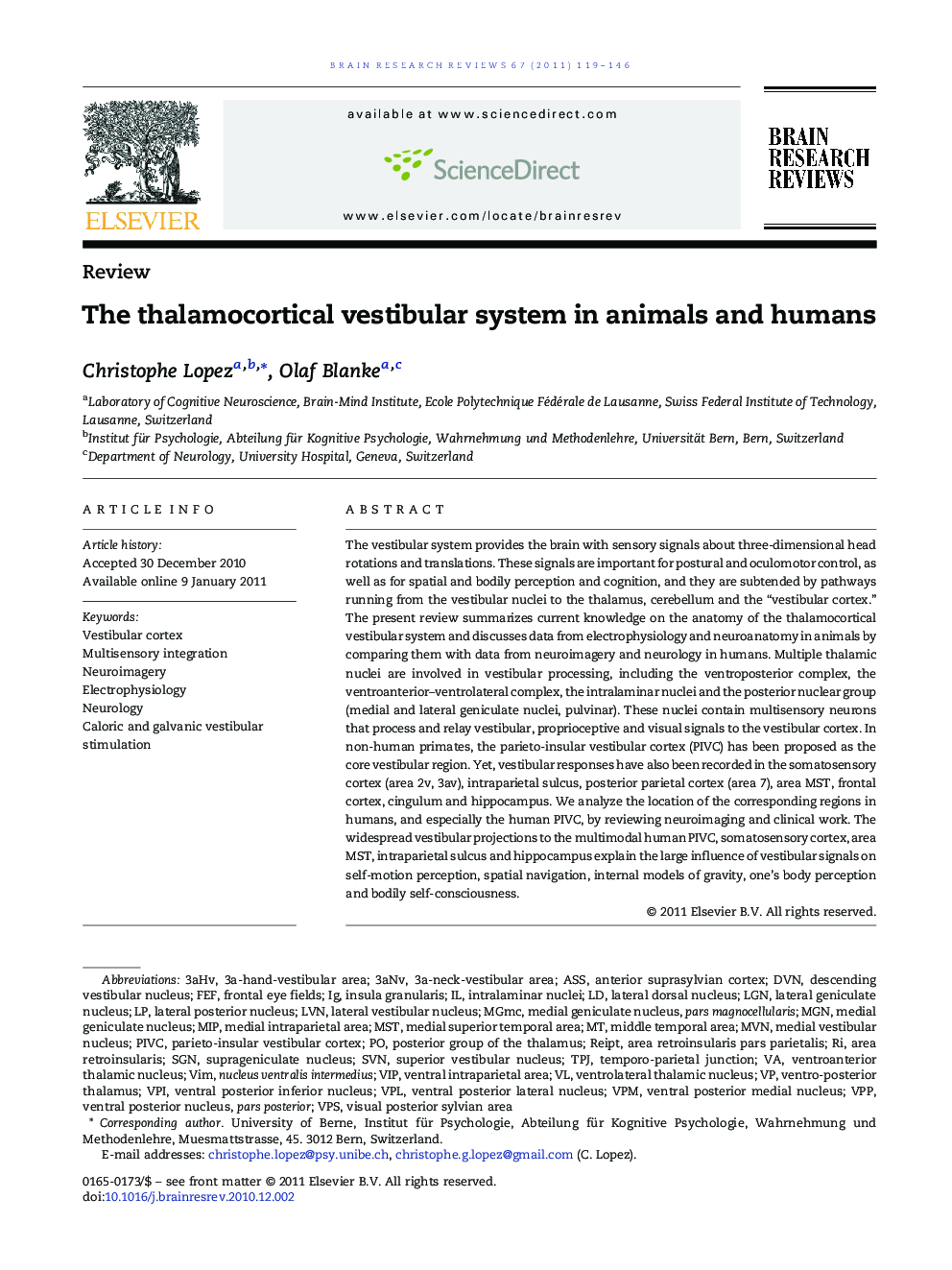| Article ID | Journal | Published Year | Pages | File Type |
|---|---|---|---|---|
| 6265954 | Brain Research Reviews | 2011 | 28 Pages |
The vestibular system provides the brain with sensory signals about three-dimensional head rotations and translations. These signals are important for postural and oculomotor control, as well as for spatial and bodily perception and cognition, and they are subtended by pathways running from the vestibular nuclei to the thalamus, cerebellum and the “vestibular cortex.” The present review summarizes current knowledge on the anatomy of the thalamocortical vestibular system and discusses data from electrophysiology and neuroanatomy in animals by comparing them with data from neuroimagery and neurology in humans. Multiple thalamic nuclei are involved in vestibular processing, including the ventroposterior complex, the ventroanterior-ventrolateral complex, the intralaminar nuclei and the posterior nuclear group (medial and lateral geniculate nuclei, pulvinar). These nuclei contain multisensory neurons that process and relay vestibular, proprioceptive and visual signals to the vestibular cortex. In non-human primates, the parieto-insular vestibular cortex (PIVC) has been proposed as the core vestibular region. Yet, vestibular responses have also been recorded in the somatosensory cortex (area 2v, 3av), intraparietal sulcus, posterior parietal cortex (area 7), area MST, frontal cortex, cingulum and hippocampus. We analyze the location of the corresponding regions in humans, and especially the human PIVC, by reviewing neuroimaging and clinical work. The widespread vestibular projections to the multimodal human PIVC, somatosensory cortex, area MST, intraparietal sulcus and hippocampus explain the large influence of vestibular signals on self-motion perception, spatial navigation, internal models of gravity, one's body perception and bodily self-consciousness.
Research Highlights⺠Multiple thalamic nuclei relay vestibular signals to the cerebral cortex. ⺠The parieto-insular vestibular cortex may be the core vestibular cortex. ⺠Vestibular cues are also processed in the temporal, frontal and cingulate cortex. ⺠Visual and somatosensory cues are integrated in the vestibular thalamus and cortex.
